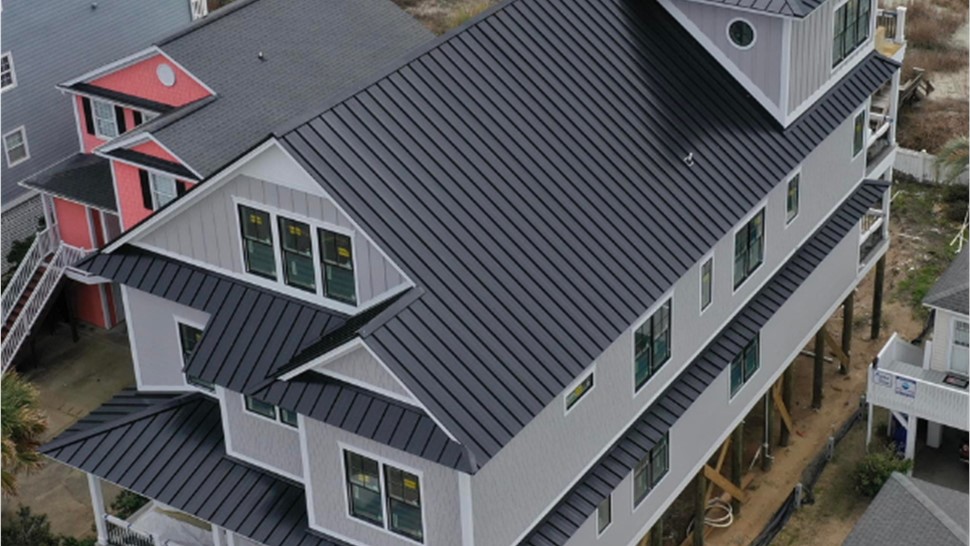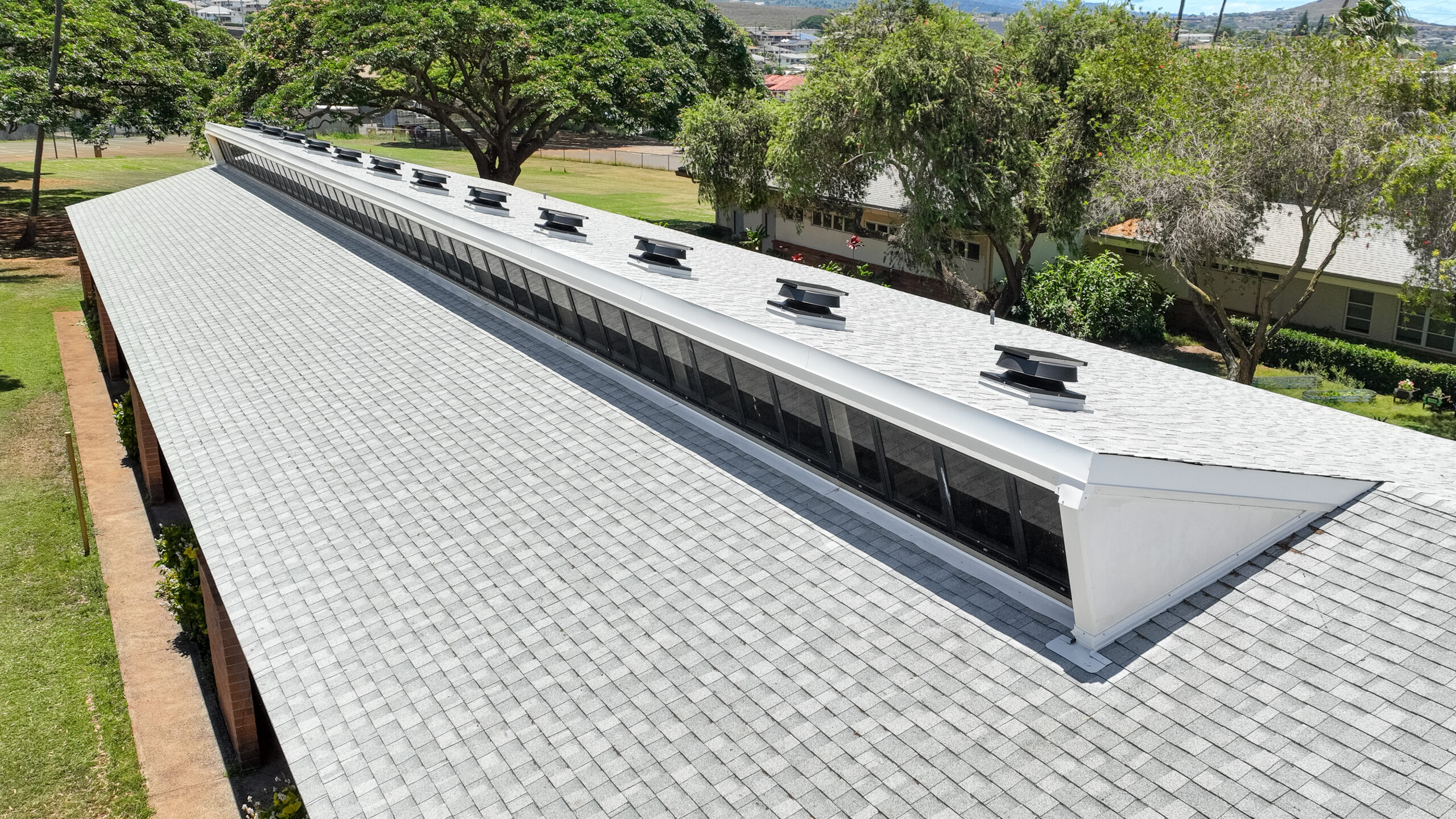Discover Typical Roofing Issues and Just How to Address Them Properly
When it comes to your roofing system, detecting problems early can save you time and cash. What details steps should you take to guarantee your roofing stays in leading problem?
Recognizing Roofing System Leakages and Their Causes

Next, examine your roofing from the outside. Look for missing or fractured floor tiles, rusted flashing, or harmed gutters.
Throughout heavy rain, observe your roofing for any kind of pooling water or drips. This can expose leakages that might not be visible throughout completely dry conditions. By remaining attentive and on a regular basis examining your roofing, you can catch leaks early and shield your home from additional damage.
Managing Missing or Harmed Roof Shingles
When you see missing or damaged roof shingles, it's vital to act promptly to stop further concerns. You'll want to recognize the degree of the damage, fix any type of missing out on tiles, and consider preventative maintenance pointers to keep your roofing system in leading shape. Taking these actions can conserve you money and time later on.
Identifying Roof Shingles Damage
Although roof shingles are designed to withstand the components, they can still endure damage gradually, causing potential leakages and pricey repair services. To determine roof shingles damages, beginning by evaluating your roof for missing out on, cracked, or crinkled shingles. Look for indications of discoloration or granule loss, which can show deterioration. Take notice of any type of areas where shingles are lifting or twisting, as these can create susceptabilities. It's likewise smart to check for water discolorations or mold on your ceilings and walls, as these may signify leakages stemming from damaged roof shingles. Frequently monitoring your roof covering, particularly after serious weather, can assist you catch problems early and preserve the stability of your home.
Fixing Missing Out On Roof Shingles
After detecting shingle damage, the following action is addressing any missing or damaged tiles immediately to protect against further problems. If you can, climb onto your roof covering securely, putting on proper gear. Taking activity quickly will assist keep your roof covering's honesty and extend its lifespan.
Preventive Maintenance Tips
How can you maintain your roofing in leading form and stop shingles from going missing or obtaining damaged? Examine your roof at least twice a year and after severe weather condition (roofing materials hawaii).
Keep seamless gutters clean and devoid of particles to ensure proper water flow and avoid tile damages. Trim looming branches to decrease the danger of them scratching versus your roof throughout tornados.
Think about using a protective sealer to extend your tiles' life expectancy. If you discover any kind of issues, address them promptly to stay clear of costly repair services later on. Taking these precautionary actions can save you time and money while ensuring your roof stays resilient and reputable.
Understanding Roof Covering Air Flow Issues
Correct roof covering ventilation is important for preserving the durability and effectiveness of your roof, as it aids manage temperature level and wetness degrees in your attic. Without appropriate air flow, you may deal with issues like too much warm accumulation, bring about premature shingle wear and tear, or raised humidity that can trigger mold growth and wood rot.
To assess your roof covering ventilation, check for signs of overheating, such as distorted shingles or a hot attic room. Search for blocked vents, which can limit air flow and trap heat. You must assure your consumption and exhaust vents are balanced, permitting correct air exchange.
Dealing with these issues quickly can protect your roof covering and save you from expensive repair services down the line. Keep positive in keeping your roofing's ventilation to safeguard your home.
Addressing Roof Moss and Algae Development
While you might value the all-natural look of moss and algae on your roofing, these microorganisms can result in considerable problems if left untreated. They trap moisture, which can lead to roof shingles damage and leakages. To tackle this issue, begin by removing any kind of visible growth. Make use of a soft-bristle brush to carefully scrub away the moss and algae, taking care not to damage your roof shingles.
Next, take into consideration applying a specialized roof cleaner or a mixture of water and bleach to kill staying spores. Routine assessments and maintenance will certainly help stop moss and algae from returning, ensuring your roof continues to be in excellent shape for years to come.
Repairing Storm Damages and Wind Concerns
After a storm, it's important to examine your roofing system for damage created by high winds and heavy rain. Beginning by inspecting for missing or damaged tiles, as these prevail casualties. If you observe any type of, it's important to change them without delay to stop leaks. Next off, examine the blinking around chimneys and vents; harmed blinking can cause water infiltration.
Look for any kind of sagging locations, which might suggest water accumulation or structural concerns. If you locate any kind of debris, like branches or leaves, remove them thoroughly to stay clear of additional damages. If your seamless gutters are obstructed, clear them to assure proper water drainage.

For tiny repair work, you might handle it yourself, however don't wait to call an expert for extensive damage. Bear in mind, acting promptly go right here can conserve you from larger issues down the line, so take that analysis seriously and resolve any kind of problems immediately.
Acknowledging Signs of Structural Damage
Just how can you tell if your roofing system is experiencing architectural damages? Beginning by looking for visible sagging or dips in your roofline. These indications suggest that the underlying structure may be jeopardized. Next off, check for fractures or spaces in the wall surfaces or ceiling, as these can signify changing or working out as a result of roofing system issues. Focus on leaks or water discolorations, especially in locations where the roof covering meets walls. If you discover missing out on or damaged roof shingles, it's vital to resolve them rapidly, as they can expose helpful site your roof covering to more damage. Additionally, inspect your attic for any kind of signs of daylight peeking with, which might suggest your roofing system's integrity goes to risk. Listen for uncommon creaking or standing out noises, as they might show structural tension. If you see any one of these indicators, it's time to speak with a roofing expert for a comprehensive analysis.
Regular Maintenance Tips for Durability

Routine Examinations Relevance
Considering that a roofing is your home's first line of protection against the elements, normal evaluations are essential for maintaining its stability. You ought to inspect your roof covering at least twice a year, preferably in spring and fall, to catch prospective problems early. Keeping up with these evaluations can avoid costly fixings down the line and prolong your roof covering's lifespan, guaranteeing your home remains secure and audio for years to come.
Correct Seamless Gutter Upkeep
Normal roofing system inspections normally lead to the importance of correct rain gutter upkeep. Check your gutters for leaks or rust; they can create water damages to your roof covering and home. By following these ideas, you'll prolong your gutters' lifespan and safeguard your roof covering.
Regularly Asked Questions
Exactly How Can I Select the Right Roof Covering Product for My Home?
To select the right roofing material for your home, consider climate, toughness, and looks. Study alternatives like asphalt tiles, metal, or ceramic tile. Think of upkeep demands and budget to find what matches you finest.
What Are the Signs I Need a Roofing System Replacement Rather of Fixing?
If you notice widespread leakages, drooping, or missing tiles, you may need a roofing substitute. If your roofing system's pop over to this site nearing its lifespan or has substantial damages, it's time to consider a full replacement instead of simply repairs.
Just how Frequently Should I Arrange Specialist Roofing Examinations?
You ought to schedule professional roofing system evaluations a minimum of yearly, preferably in spring or autumn. This aids capture potential concerns early, ensuring your roof covering stays in great problem and lengthening its life expectancy.
Can I Install a New Roofing System Over My Old One?
You can set up a new roofing over your old one, but it's necessary to examine neighborhood building ordinance and ensure the existing roof's condition is sound. This approach can save money and time, but take into consideration prospective issues.
What Is the Ordinary Lifespan of Different Roof Covering Materials?
The standard life expectancy varies by material: asphalt tiles last 15-30 years, steel roof coverings can last 40-70 years, while tile or slate roofing systems may go beyond half a century. Select intelligently based on your environment and spending plan.
Verdict
By staying vigilant and attending to usual roof covering issues quickly, you can shield your home and extend your roofing system's life expectancy. Frequently check for leakages, damaged roof shingles, and air flow issues, and deal with moss or algae growth prior to it worsens - roofing companies honolulu. After tornados, look for any damages and make necessary fixings. With a little routine maintenance, you'll not only guard your financial investment however also appreciate satisfaction knowing your roof covering remains in top form. Do not wait-- act currently!